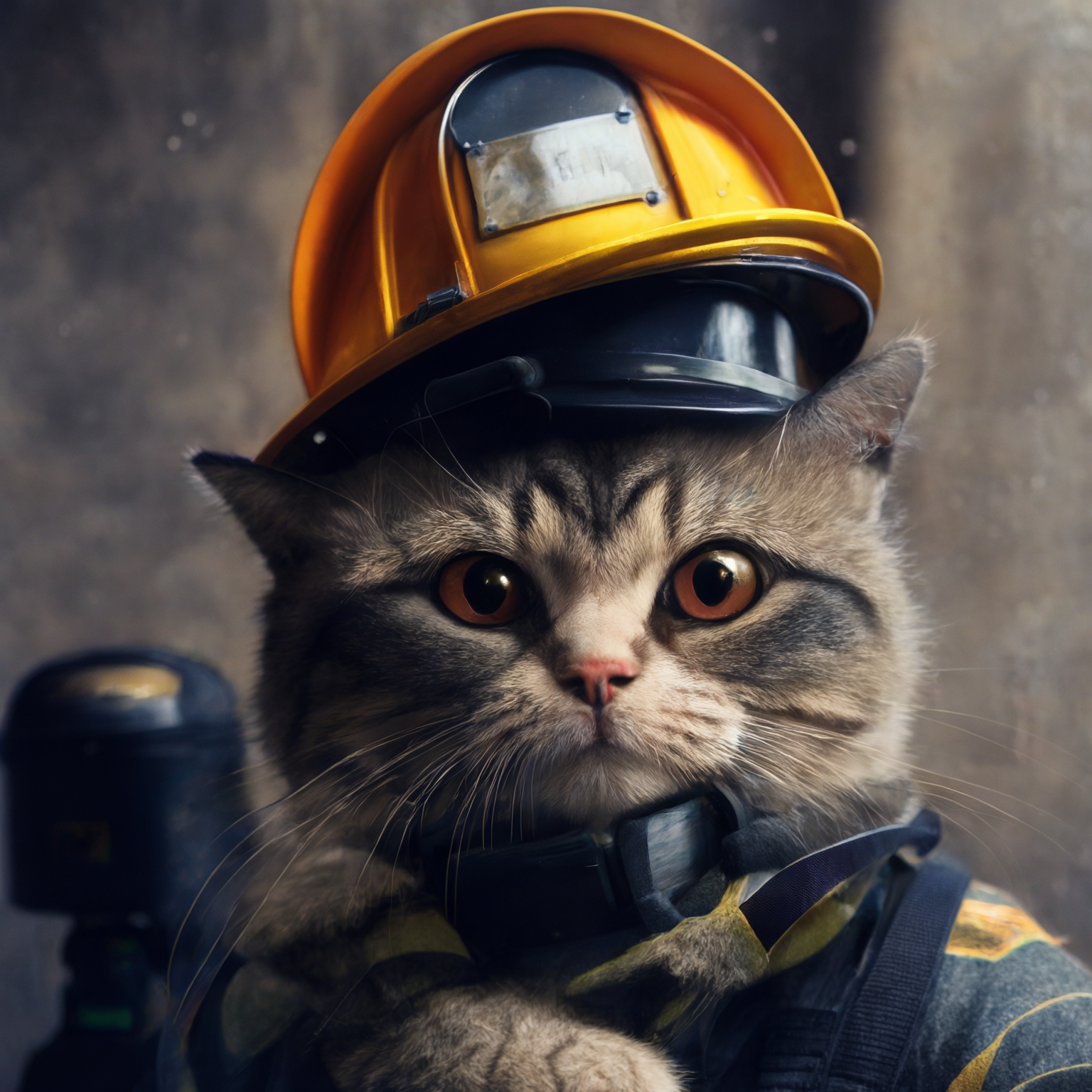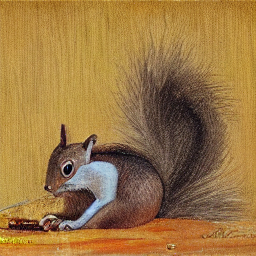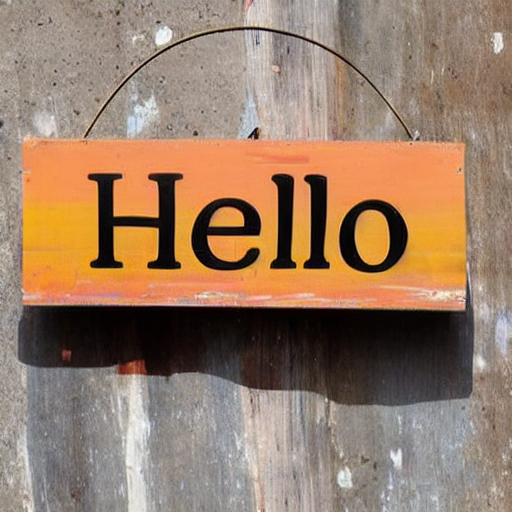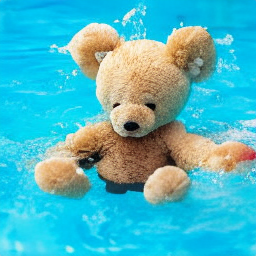wuerstchen
Maintainer: cjwbw

4

| Property | Value |
|---|---|
| Run this model | Run on Replicate |
| API spec | View on Replicate |
| Github link | View on Github |
| Paper link | View on Arxiv |
Create account to get full access
Model overview
wuerstchen is a new framework for training text-conditional models developed by cjwbw. It introduces a unique approach that compresses the computationally expensive text-conditional stage into a highly compressed latent space. This enables faster and more efficient training compared to common text-to-image models. wuerstchen is similar to other models like wuerstchen-v2, internlm-xcomposer, scalecrafter, daclip-uir, and animagine-xl-3.1, all of which are also developed by cjwbw.
Model inputs and outputs
wuerstchen is a text-to-image model that takes in a text prompt and generates corresponding images. The model has a number of configurable input parameters such as seed, image size, guidance scales, and number of inference steps.
Inputs
- Prompt: The text prompt used to guide the image generation
- Negative Prompt: Specify things to not see in the output
- Seed: Random seed (leave blank to randomize)
- Width: Width of output image
- Height: Height of output image
- Prior Guidance Scale: Scale for classifier-free guidance in prior
- Num Images Per Prompt: Number of images to output
- Decoder Guidance Scale: Scale for classifier-free guidance in decoder
- Prior Num Inference Steps: Number of prior denoising steps
- Decoder Num Inference Steps: Number of decoder denoising steps
Outputs
- Image(s): The generated image(s) based on the provided prompt
Capabilities
wuerstchen is able to generate high-quality images from text prompts by leveraging its unique multi-stage compression approach. This allows for faster and more efficient training compared to other text-to-image models. The model is particularly adept at generating detailed, photorealistic images across a wide range of subjects and styles.
What can I use it for?
You can use wuerstchen to generate custom images for a variety of applications, such as:
- Content creation for social media, blogs, or websites
- Generating concept art or illustrations for creative projects
- Prototyping product designs or visualizations
- Enhancing data visualizations with relevant imagery
To get started, you can try the Google Colab notebook or the Replicate web demo.
Things to try
Experiment with different prompts, image sizes, and parameter settings to see the range of outputs wuerstchen can produce. You can also try combining it with other models, such as internlm-xcomposer for more advanced text-image composition and comprehension tasks.
This summary was produced with help from an AI and may contain inaccuracies - check out the links to read the original source documents!
Related Models

wuerstchen-v2

1
The wuerstchen-v2 model, created by pagebrain, is a fast diffusion model for image generation that can produce outputs in around 3 seconds. This model is similar to other fast diffusion models like zust-diffusion, segmind-vega, and animate-diff, which aim to provide high-speed image generation while maintaining quality. Model inputs and outputs The wuerstchen-v2 model takes in a prompt, a seed value, image size, number of outputs, negative prompt, and various parameters that control the diffusion process. It outputs one or more images based on the provided inputs. Inputs Prompt**: The input text prompt that describes the desired image Seed**: A random seed value to control the image generation Width**: The width of the output image, up to a maximum of 1536 pixels Height**: The height of the output image, up to a maximum of 1536 pixels Num Outputs**: The number of images to generate, up to a maximum of 4 Negative Prompt**: Text describing things the user does not want to see in the output Num Inference Steps**: The number of denoising steps to perform during the diffusion process Prior Guidance Scale**: A scaling factor for the prior guidance during diffusion Decoder Guidance Scale**: A scaling factor for the classifier-free guidance during diffusion Prior Num Inference Steps**: The number of denoising steps to perform for the prior guidance Outputs One or more images generated based on the provided inputs Capabilities The wuerstchen-v2 model is capable of generating a wide variety of images based on text prompts, with a focus on speed. It can produce high-quality outputs in just a few seconds, making it suitable for applications that require fast image generation, such as interactive design tools or prototyping. What can I use it for? The wuerstchen-v2 model could be useful for various applications that require quick image generation, such as creating dynamic visuals for presentations, rapidly iterating on design concepts, or generating stock images for commercial use. Its speed and flexibility make it a potentially valuable tool for businesses, designers, and artists who need to produce images efficiently. Things to try Experiment with different prompts and parameter combinations to see the range of images the wuerstchen-v2 model can generate. Try varying the prompt complexity, image size, and guidance scaling to see how these factors affect the output. You can also compare the results to other fast diffusion models like zust-diffusion or segmind-vega to understand the unique strengths and tradeoffs of each approach.
Updated Invalid Date

latent-diffusion-text2img

4
The latent-diffusion-text2img model is a text-to-image AI model developed by cjwbw, a creator on Replicate. It uses latent diffusion, a technique that allows for high-resolution image synthesis from text prompts. This model is similar to other text-to-image models like stable-diffusion, stable-diffusion-v2, and stable-diffusion-2-1-unclip, which are also capable of generating photo-realistic images from text. Model inputs and outputs The latent-diffusion-text2img model takes a text prompt as input and generates an image as output. The text prompt can describe a wide range of subjects, from realistic scenes to abstract concepts, and the model will attempt to generate a corresponding image. Inputs Prompt**: A text description of the desired image. Seed**: An optional seed value to enable reproducible sampling. Ddim steps**: The number of diffusion steps to use during sampling. Ddim eta**: The eta parameter for the DDIM sampler, which controls the amount of noise injected during sampling. Scale**: The unconditional guidance scale, which controls the balance between the text prompt and the model's own prior. Plms**: Whether to use the PLMS sampler instead of the default DDIM sampler. N samples**: The number of samples to generate for each prompt. Outputs Image**: A high-resolution image generated from the input text prompt. Capabilities The latent-diffusion-text2img model is capable of generating a wide variety of photo-realistic images from text prompts. It can create scenes with detailed objects, characters, and environments, as well as more abstract and surreal imagery. The model's ability to capture the essence of a text prompt and translate it into a visually compelling image makes it a powerful tool for creative expression and visual storytelling. What can I use it for? You can use the latent-diffusion-text2img model to create custom images for various applications, such as: Illustrations and artwork for books, magazines, or websites Concept art for games, films, or other media Product visualization and design Social media content and marketing assets Personal creative projects and artistic exploration The model's versatility allows you to experiment with different text prompts and see how they are interpreted visually, opening up new possibilities for artistic expression and collaboration between text and image. Things to try One interesting aspect of the latent-diffusion-text2img model is its ability to generate images that go beyond the typical 256x256 resolution. By adjusting the H and W arguments, you can instruct the model to generate larger images, up to 384x1024 or more. This can result in intriguing and unexpected visual outcomes, as the model tries to scale up the generated imagery while maintaining its coherence and detail. Another thing to try is using the model's "retrieval-augmented" mode, which allows you to condition the generation on both the text prompt and a set of related images retrieved from a database. This can help the model better understand the context and visual references associated with the prompt, potentially leading to more interesting and faithful image generation.
Updated Invalid Date

textdiffuser

1
textdiffuser is a diffusion model created by Replicate contributor cjwbw. It is similar to other powerful text-to-image models like stable-diffusion, latent-diffusion-text2img, and stable-diffusion-v2. These models use diffusion techniques to transform text prompts into detailed, photorealistic images. Model inputs and outputs The textdiffuser model takes a text prompt as input and generates one or more corresponding images. The key input parameters are: Inputs Prompt**: The text prompt describing the desired image Seed**: A random seed value to control the image generation Guidance Scale**: A parameter that controls the influence of the text prompt on the generated image Num Inference Steps**: The number of denoising steps to perform during image generation Outputs Output Images**: One or more generated images corresponding to the input text prompt Capabilities textdiffuser can generate a wide variety of photorealistic images from text prompts, ranging from scenes and objects to abstract art and stylized depictions. The quality and fidelity of the generated images are highly impressive, often rivaling or exceeding human-created artwork. What can I use it for? textdiffuser and similar diffusion models have a wealth of potential applications, from creative tasks like art and illustration to product visualization, scene generation for games and films, and much more. Businesses could use these models to rapidly prototype product designs, create promotional materials, or generate custom images for marketing campaigns. Creatives could leverage them to ideate and explore new artistic concepts, or to bring their visions to life in novel ways. Things to try One interesting aspect of textdiffuser and related models is their ability to capture and reproduce specific artistic styles, as demonstrated by the van-gogh-diffusion model. Experimenting with different styles, genres, and creative prompts can yield fascinating and unexpected results. Additionally, the clip-guided-diffusion model offers a unique approach to image generation that could be worth exploring further.
Updated Invalid Date

vq-diffusion

20
vq-diffusion is a text-to-image synthesis model developed by cjwbw. It is similar to other diffusion models like stable-diffusion, stable-diffusion-v2, latent-diffusion-text2img, clip-guided-diffusion, and van-gogh-diffusion, all of which are capable of generating photorealistic images from text prompts. The key innovation in vq-diffusion is the use of vector quantization to improve the quality and coherence of the generated images. Model inputs and outputs vq-diffusion takes in a text prompt and various parameters to control the generation process. The outputs are one or more high-quality images that match the input prompt. Inputs prompt**: The text prompt describing the desired image. image_class**: The ImageNet class label to use for generation (if generation_type is set to ImageNet class label). guidance_scale**: A value that controls the strength of the text guidance during sampling. generation_type**: Specifies whether to generate from in-the-wild text, MSCOCO datasets, or ImageNet class labels. truncation_rate**: A value between 0 and 1 that controls the amount of truncation applied during sampling. Outputs An array of generated images that match the input prompt. Capabilities vq-diffusion can generate a wide variety of photorealistic images from text prompts, spanning scenes, objects, and abstract concepts. It uses vector quantization to improve the coherence and fidelity of the generated images compared to other diffusion models. What can I use it for? vq-diffusion can be used for a variety of creative and commercial applications, such as visual art, product design, marketing, and entertainment. For example, you could use it to generate concept art for a video game, create unique product visuals for an e-commerce store, or produce promotional images for a new service or event. Things to try One interesting aspect of vq-diffusion is its ability to generate images that mix different visual styles and concepts. For example, you could try prompting it to create a "photorealistic painting of a robot in the style of Van Gogh" and see the results. Experimenting with different prompts and parameter settings can lead to some fascinating and unexpected outputs.
Updated Invalid Date